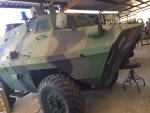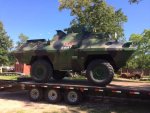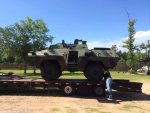Thanks for the info. This vehicle seems to be rare in the U.S. so I may have to look elsewhere for manuals. If all else fails I'll just tear into it until I figure it out when I have the time. I'll certainly let you know how its going.
The vehicle may be rare, but the way air systems work is rather common. Even trucks made overseas have the same or very similar equipment - as the design of air systems is old-school knowledge.
Any industrial supply company should be able to source an overpressure blow off valve. GET TWO: 1) for the compressor head, 2) for the first air tank.
Air compressors in heavy vehicles usually have an unloader, which is controlled by the governor. When there is no pressure in the unloader, the compressor valves are engaged and the compressor will build pressure. When the governor trips, it pressurizes the unloader and the valves are held open to prevent the build of pressure. This is the first place I'd look - at the compressor itself. If there are any missing hoses or things that look like they may have been capped off by someone who didn't know what they were doing, that would cause the compressor to run until it locks up (or your hoses and air tank explode).
If the governor fails, it'll likely have to be replaced - the
D-2 governor is probably the most common part to source and you can find them everywhere. Even if the D-2 is not the original part what you need to start with is the function of what is supposed to occur.
Verify that you have unloader plumbing in the compressor, verify that there is a governor, then verify the air lines to the tanks are open/un-obstructed. Important to know if you've never touched an air system before is that if you run it cold and it has moisture in the lines, pressure changes are enough to freeze the water and plug up the lines.
Modern air systems have a desiccant drier, older systems had alcohol vapor injection. If you're not a hard-on for 100% accurate restoration/repair, you can move to a modern system for pressure generation. The AD-9 dryer is really common and cheap and will cover most air volume drying needs (unless you run a ton of air accessories constantly, and I mean a
lot).
More pictures would help those of us understand what you're dealing with, and would enable us to give you better info.





